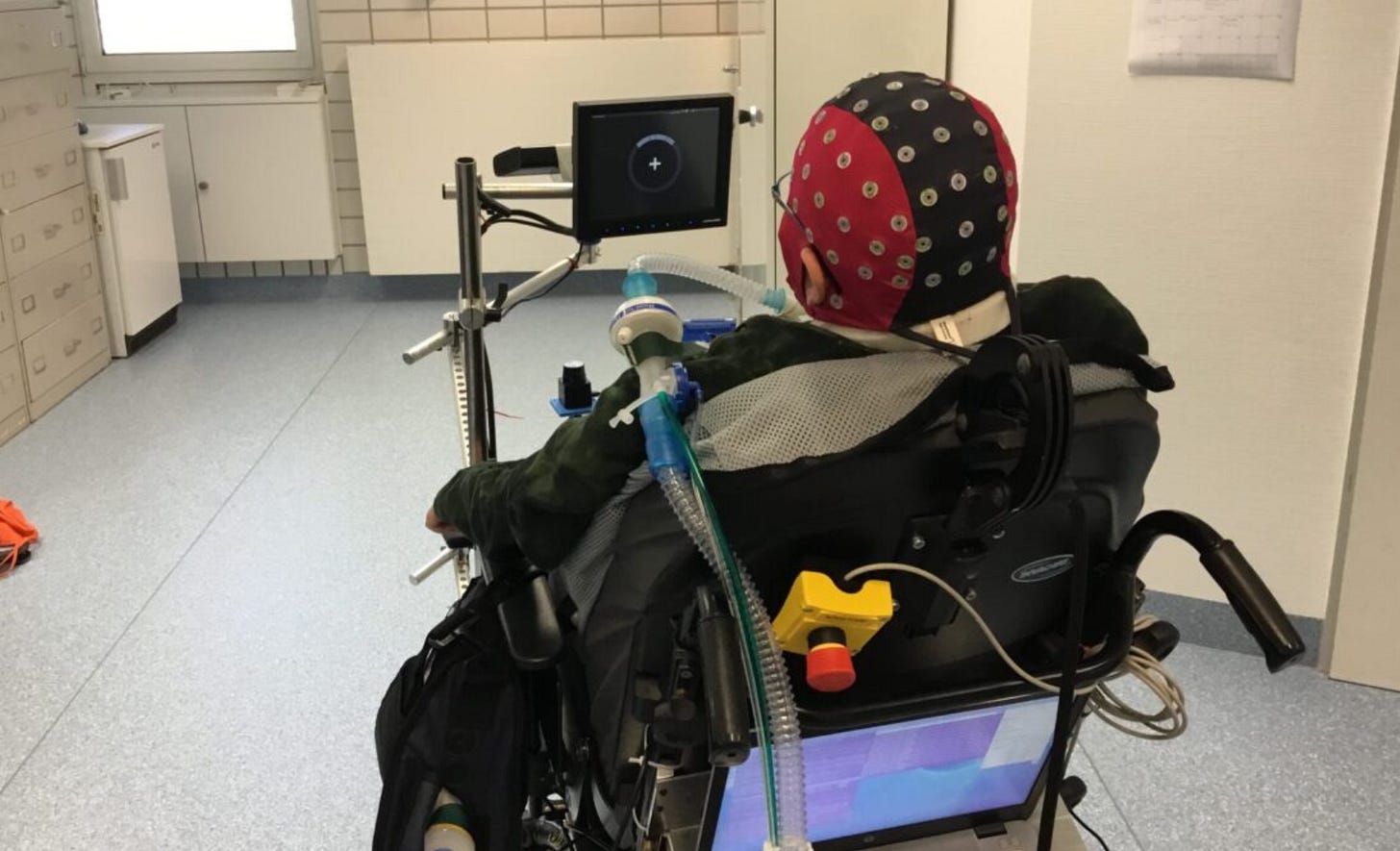This week we look at how AI might help to lessen traffic jams with our current cars. We examine a new way of training AI which mimics how we learn as children. Imitation learning may provide a better way of teaching AI for tasks without a clear goal. We discover a new EV battery that can recharge to 80% in 72 seconds and a new non invasive brain controlled wheelchair. Finally I need to correct an error in last week’s newsletter. I am as shocked as you are but yes there was an error (I was going to try and pass it off as a typo but the error is repeated 4 times, statistically improbable that it was a mere typo, more like a brain fade).
AI connected Cars
Humans are just not very good at driving cars effectively. We cause many of our traffic jams by the way we drive. Think of all the times that you have all been traveling along a freeway when the traffic comes to a standstill. We inch along for a kilometer or two before the traffic starts flowing again. No accident, no reason for the jam. Humans just don’t navigate dense traffic well. We stop early or late and the cascading effect causes a traffic jam.
A team at Vanderbilt University in Nashville has been studying the problem of phantom traffic jams for the past 12 years. An experiment in Japan in 2010 had shown how phantom traffic jams develop by putting 20 human drivers on a circular track. The drivers were asked to drive at a constant speed. It was not long before traffic went from a smooth flow to a series of stops and starts. One person brakes for whatever reason, the person behind takes a second or two to respond so brakes harder and this effect cascades down the line until the traffic is at a standstill.
The team recently undertook an experiment in Nashville using an AI to help people drive their current technology cars. The experiment has shown that there is a better way. The researchers utilized 100 cars that traveled in loops on a 15 mile section of the I-24 (interstate highway) from about 6am to 9.45am each morning. The team worked on the assumption that if 5% of the cars were acting together, the number of phantom traffic jams could be reduced. The 100 cars were equipped with a wireless communication capability that sent traffic information back and forth.
The team then took advantage of the adaptive cruise control already available on many newer cars. This technology lets the driver set a car to cruise at a certain speed. The car automatically slows down and speeds up to keep a safe distance from the car in front. The researchers used an AI to modify the adaptive cruise control to react to the overall traffic flow, including what was happening far ahead.
At the high level, information about traffic conditions was used to create an overall speed plan. The plan was broadcast to the cars which then used an AI to determine the individual car’s best course of action. A 4 mile stretch of the I-24 was monitored using 300 pole mounted sensors.
The results of the experiment are still being calculated however the team believes that it demonstrated that phantom jams can be reduced through the use of AI input into the current technologies in our cars. The more cars with this new AI input the better however with as little as 5% of cars utilizing the technology, phantom jams can be reduced.
In 2017 the University of Arizona repeated the Japanese experiment however they added a single self driving car to the mix (1 car in that case was 5% of the cars in the experiment). The self driving car smoothed the traffic flow so that there was 98% less braking from all of the cars. This lead to a 40% increase in fuel efficiency and a 14% increase in the distance driven in the same time period.
It has been estimated that self driving cars, due to their ability to work together, will be 8 times more efficient than human drivers. A 4 lane highway with self driving cars will be able to carry the equivalent of 32 lanes of human driven cars. Whilst these estimates may be high it is clear that using AI to help humans drive has the potential to reduce the number of unnecessary traffic jams.
EV battery the charges in 72 seconds
Swiss startup, Morand has developed a new battery technology that can be charged to 80% in 72 seconds, 98% in 120 seconds and 100% in 2.5minutes. This is equivalent to the time it takes to fill a petrol tank.
The electric hybrid battery system uses hybrid ultra capacitors from Sech SA to store the energy. We first spoke about the potential for the use of ultra capacitors for energy storage in 2019. The Morand battery pack uses significantly less lithium and cobalt than other EV batteries. Some lithium is used however it is primarily composed of aluminum, graphene and carbon. This dramatically reduces the potential for fire.
Additionally the system can undergo far more cycles (meaning much longer life) than other battery technologies. Testing demonstrated 50,000 cycles with one test unit running for 70,000 cycles. This is 5 to 10 times the discharge cycles of other batteries which significantly reduces the lifetime cost of ownership.
The next challenge is to scale production and reduce the price to parity with other lithium-ion batteries. The system is likely most useful for smaller cars, drones and devices like e-bikes.
Imitation Learning for AI
Currently most neural networks use reinforcement learning to develop their capabilities. This is where an AI starts from scratch and uses trial and error to learn. This technique has lead to the biggest AI breakthroughs of the past few years. Beating humans at various games, controlling fusion reactors and discovering faster methods to do fundamental math are all examples of reinforcement learning at work.
Reinforcement learning works best for tasks with a clear goal, where a series of random actions can lead to accidental success. Reinforcement algorithms reward those accidental successes to make them more likely to happen again. Imitation learning is an alternative for where, for most things in life, there is no clear goal.
A team at OpenAI has used imitation learning to teach an AI to play Minecraft. The bot watched 70,000 hours of video of people playing the computer game. The AI learned to perform complicated sequences of keyboard and mouse clicks to complete tasks. For example chopping down trees and crafting tools. The bot was also able to craft diamond tools. This typically takes a skilled human player 20 minutes of high speed clicking or around 24,000 actions.
There is a massive amount of video training data available on the internet. The AI learns by watching the human carry out a task. Imitation learning can be used to train AI to control robot arms, drive cars and navigate web pages.
Previous approaches to developing Imitation Learning relied on video demonstrations being labelled at each step, i.e. doing this makes this happen etc. Labeling video in this way takes a lot of human effort.
The team at OpenAI used a different approach called Video Pre-Training (VPT). They had coworkers play minecraft whist they recorded their keyboard and mouse clicks alongside the video from their screens. This gave them 2,000 hours of annotated Minecraft play which allowed them to develop a model that matched keyboard actions to onscreen outcomes. This model was then used to generate action labels for 70,000 hours of unlabeled video found on the internet. This provided a massive dataset for the Imitation Learning.
Taking the bot trained on Imitation Learning the team then fine tuned it with some reinforcement learning. This allows the AI to complete tasks containing over 20,000 consecutive actions.
Large internet sized training libraries will potentially unlock new AI capabilities. However teaching an AI to play a game via point and clicks is simpler than copying many other real world actions. This step is however important in proving the power of scaling up models and training on massive data sets.
The team claims that their approach could initially be used to train AI to carry out tasks that use a keyboard and mouse. For example booking flights or buying groceries online. In the future it could be used to train robots to carry out physical real world tasks.
Brain Controlled Wheelchairs
A team from Universities in the US and Europe have enabled several patients with quadriplegic injuries to operate a brain controlled wheelchair in an obstacle filled room. There have been several of these projects over the past few years however they all involved invasive surgery to insert a controller into the brain. This new project used an electrode cap for the brain computer interface. The first project to successfully use a noninvasive interface. The cap amplifies the brain signals and then uses an AI to “fill in the gaps” in a command.
The project lead described it as like riding a horse. The rider can tell the horse to turn left or right but the horse has to figure out the optimal way to carry out the command. The patients had to train by visualizing the wheelchair’s movement just like moving their own limbs. This took up to 5 months of biweekly training.
The wheelchair also was fitted out with sensors to understand its’ environment. Robotic intelligence software was used to fill in the blanks in the users’ commands to facilitate accurate and safe movement of the wheelchair.
Two of the three patients achieved an accuracy of 95% to 98% in moving their wheelchairs. The team attributed the increased accuracy to improvements in the AI and the thoughts of the person controlling the wheelchair. An intriguing change in brain activity was noted over the training period. The team’s success is a sign of the future commercial viability for mind powered wheelchairs and maybe one day, more complex robotics.
Error Correction
Last week I wrongly said that a new metric prefix called the Rotta had been approved for measures with a 1 and 27 zeros. The correct prefix is Ronna. Therefore the Earth is roughly 6 Ronnagrams (not 6 Rottagrams). I hope that none of you were embarrassed by using the wrong prefix.
Paying it Forward
If you have a start-up or know of a start-up that has a product ready for market please let me know. I would be happy to have a look and feature the startup in this newsletter. Also if any startups need introductions please get in touch and I will help where I can.
If you have any questions or comments please comment below.
I would also appreciate it if you could forward this newsletter to anyone that you think might be interested.
Till next week.





